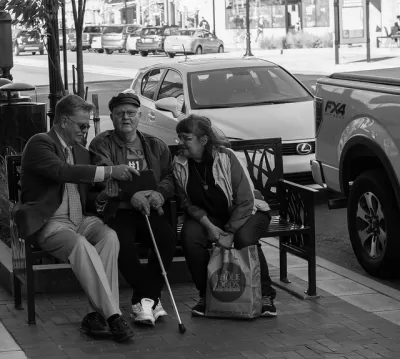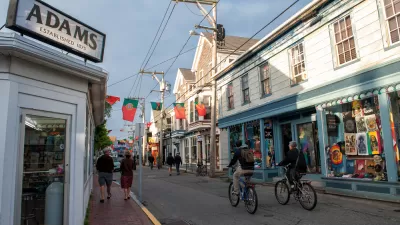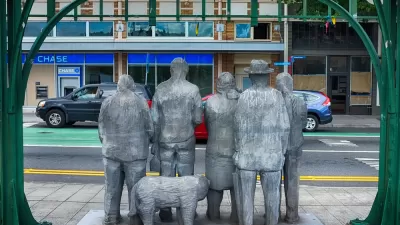Making streets, sidewalks safer for people with limited mobility.

By Jessica Zimmer
Before the City of Concord renovated its Main Street, residents and visitors had to walk up two steps to access the restaurants and storefronts along the western side of the road.
New Hampshire’s capital city eliminated the double-step curbs as part of a larger downtown complete streets project, which aimed to improve access for people with disabilities and spur economic development. The city also created additional handicapped parking spaces and converted a portion of the Main Street from four lanes to two lanes and added a six-foot center median to slow vehicles and reduce the distance for pedestrians crossing the busy street.
“We call Concord’s Main Street New Hampshire’s Main Street, and Concord’s downtown New Hampshire’s downtown,” Concord City Engineer Ed Roberge said. “Making Main Street more accessible is something in which the city takes great pride.”
Concord’s project is just one example of ways communities are trying to make streets and sidewalks more accessible for senior citizens and people with physical disabilities. Across North America, cities are employing different tactics including removing lanes of traffic, adding rest benches with shade and medians with greenery, installing raised crosswalks to slow traffic, working with businesses to build ramps and eliminating obstacles in sidewalks.
These measures are necessary to help avoid injury and inconvenience to the 18.2 million or 7.5 percent of adults in the United States that have extreme difficulty walking or are unable to walk a quarter mile. As the country’s population ages, an increasing percentage of Americans with disabilities are 55 and older.
One factor driving good design is the adoption of complete streets policies, a national initiative being spearheaded by Smart Growth America, a Washington, D.C. non-profit organization. Complete streets is an approach that advocates for transportation projects being planned, maintained and designed so all users can access the roadway.
Emiko Atherton, director of the National Complete Streets Coalition, a Smart Growth program, said one of complete streets’ goals is to eliminate traffic fatalities.
“You can design away a lot of behavior,” she said.
FULL STORY: Breaking Down Barriers

Planetizen Federal Action Tracker
A weekly monitor of how Trump’s orders and actions are impacting planners and planning in America.

San Francisco's School District Spent $105M To Build Affordable Housing for Teachers — And That's Just the Beginning
SFUSD joins a growing list of school districts using their land holdings to address housing affordability challenges faced by their own employees.

The Tiny, Adorable $7,000 Car Turning Japan Onto EVs
The single seat Mibot charges from a regular plug as quickly as an iPad, and is about half the price of an average EV.

Seattle's Plan for Adopting Driverless Cars
Equity, safety, accessibility and affordability are front of mind as the city prepares for robotaxis and other autonomous vehicles.

As Trump Phases Out FEMA, Is It Time to Flee the Floodplains?
With less federal funding available for disaster relief efforts, the need to relocate at-risk communities is more urgent than ever.

With Protected Lanes, 460% More People Commute by Bike
For those needing more ammo, more data proving what we already knew is here.
Urban Design for Planners 1: Software Tools
This six-course series explores essential urban design concepts using open source software and equips planners with the tools they need to participate fully in the urban design process.
Planning for Universal Design
Learn the tools for implementing Universal Design in planning regulations.
Smith Gee Studio
City of Charlotte
City of Camden Redevelopment Agency
City of Astoria
Transportation Research & Education Center (TREC) at Portland State University
US High Speed Rail Association
City of Camden Redevelopment Agency
Municipality of Princeton (NJ)





























